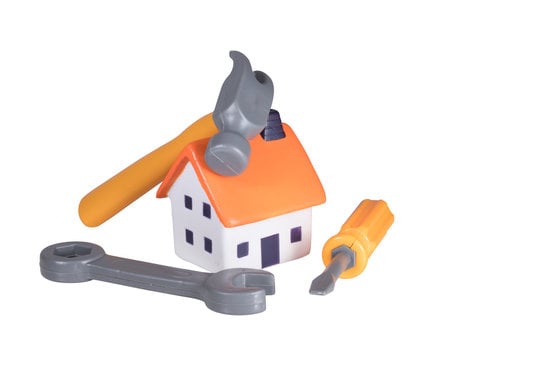Are you wondering how to apply for home improvement loans to enhance the value and comfort of your home? Home improvement loans are an essential financial tool for homeowners looking to renovate, remodel, or upgrade their homes. In this article, we will provide a detailed guide on understanding home improvement loans, assessing your home improvement needs, researching lenders and loan options, gathering required documentation, applying for the loan, and managing and repaying the loan.
Home improvement loans play a crucial role in helping homeowners turn their house into their dream home. Whether it’s upgrading the kitchen, adding an extra room, or renovating the bathroom, these loans provide the necessary funds to make these projects a reality. Throughout this blog post, you will gain valuable insights into what home improvement loans are and how they can benefit you as a homeowner.
We will cover everything from understanding the different types of home improvement loans available to providing tips on how to compare lenders and loan options. Our goal is to equip you with all the information you need to successfully apply for a home improvement loan and complete your desired projects with confidence. So let’s dive in and explore the world of home improvement loans together.
Understanding Home Improvement Loans
Home improvement loans are a valuable financial tool for homeowners looking to enhance the value, comfort, and aesthetics of their homes. These types of loans provide individuals with the funds needed to renovate, repair, or remodel their properties. Understanding home improvement loans is essential for homeowners who want to take advantage of these financing options.
There are various types of home improvement loans available to homeowners, including personal loans, home equity loans, and government-backed loans. Personal loans are unsecured and do not require collateral, making them a popular choice for smaller projects. Home equity loans allow homeowners to borrow against the equity in their property, while government-backed loans such as FHA Title I Property Improvement Loans are insured by the federal government.
When considering a home improvement loan, it’s crucial to weigh the pros and cons of each type and determine which option best suits your needs and financial situation. For example, personal loans may have higher interest rates compared to home equity loans, but they offer more flexibility in terms of repayment terms.
In addition to understanding the different types of home improvement loans available, it’s important for homeowners to assess their individual needs and priorities when it comes to home improvement projects. This includes creating a budget for the projects and realistically planning and setting goals for what you want to achieve with your renovations. By thoroughly assessing your needs and budgeting accordingly, you can ensure that you make the most out of your home improvement loan.
| Types of Home Improvement Loans | Pros and Cons |
|---|---|
| Personal Loans | Unsecured; higher interest rates |
| Home Equity Loans | Borrow against property equity; lower interest rates |
| Government-Backed Loans | FHA Title I Property Improvement Loans; insured by federal government |
Assessing Your Home Improvement Needs
When considering a home improvement project, it’s important to assess your needs and prioritize the tasks at hand. This will help you create a realistic budget and ensure that your projects align with your goals. Start by making a list of all the areas in your home that require improvement, whether it’s upgrading the kitchen, adding a new bathroom, or enhancing the outdoor space. Then, prioritize these projects based on their urgency and your available budget.
Creating a budget for your home improvement projects is crucial to avoid overspending. Research the costs associated with each task and set realistic financial goals. Keep in mind that unexpected expenses may arise during the renovation process, so it’s important to have some flexibility in your budget.
In addition to prioritizing your projects and creating a budget, it’s also essential to plan realistically and set achievable goals. Determine the timeline for each project and consider any potential disruptions to your daily life during the renovation process. By taking these factors into account, you can ensure that your home improvement projects are not only successful but also manageable.
| Home Improvement Projects | Prioritization |
|---|---|
| Upgrade Kitchen | High Priority |
| Add New Bathroom | Medium Priority |
| Enhance Outdoor Space | Low Priority |
By assessing and prioritizing your home improvement needs, creating a realistic budget, and setting achievable goals, you can ensure that your renovation projects are successful. These steps will not only help you enhance the value and comfort of your home but also make the application process for a home improvement loan smoother and more efficient. Keep reading for tips on researching lenders and loan options for financing your home improvement projects.
Researching Lenders and Loan Options
When it comes to applying for a home improvement loan, one of the most crucial steps is researching lenders and loan options. This section will provide you with helpful tips on how to compare different lenders and loan options available to you.
Tips on Comparing Lenders and Loan Options
When researching lenders and loan options, it’s essential to compare interest rates, terms, and fees. Interest rates can significantly impact the overall cost of your loan, so it’s crucial to find a lender offering favorable rates. Additionally, pay attention to the terms of the loan, such as repayment period and any prepayment penalties. Consider the fees associated with each loan option, including origination fees and closing costs.
Government-Backed Loans and Grants for Home Improvements
In addition to traditional lenders, consider exploring government-backed loans and grants for home improvements. These programs often offer competitive interest rates and flexible terms. Research programs offered by agencies such as the Federal Housing Administration (FHA) or the Department of Veterans Affairs (VA). You may also be eligible for grant programs aimed at specific home improvement projects, such as energy-efficient upgrades or accessibility modifications.
Importance of Understanding Loan Options
Understanding your loan options is essential in making an informed decision about which lender to choose and which type of loan to apply for. Take the time to thoroughly research each option, weighing the pros and cons of each. By doing so, you can ensure that you are choosing a loan that best fits your financial situation and home improvement needs.
By thoroughly researching lenders and loan options, you can make a well-informed decision when applying for a home improvement loan. This step is crucial in finding a favorable interest rate and terms that align with your budget and project goals How to apply for home improvement loans.
Gathering Required Documentation
When it comes to applying for a home improvement loan, gathering the necessary documentation is a crucial step in the process. Lenders will require certain documents to assess your financial situation and determine your eligibility for a loan. Here are some key sub-sections on how to gather all the required documentation for your home improvement loan application.
Comprehensive List of Documents
Before you start the application process, it’s important to have all the necessary documents ready. This may include proof of income, tax returns, bank statements, identification documents, and any existing loan or mortgage information. Being prepared with a comprehensive list of required documents can streamline the application process and make it easier for lenders to evaluate your financial stability.
Organizing and Preparing Your Financial Documents
Once you have identified all the required documentation, it’s essential to organize and prepare them properly. This means creating an organized file or digital folder that contains all the necessary paperwork in an easily accessible format. Organizing your financial documents demonstrates professionalism and responsibility, which can positively influence lenders’ perceptions of your loan application.
Importance of Having a Good Credit Score
In addition to preparing financial documents, having a good credit score is crucial when applying for a home improvement loan. Lenders will use your credit score as an indicator of your creditworthiness and ability to repay the loan.
It’s recommended to check your credit score before applying for a loan and take steps to improve it if necessary. A higher credit score can increase your chances of getting approved for a home improvement loan with favorable terms and interest rates.
Applying for the Loan
When it comes to home improvement projects, sometimes homeowners need to seek financial assistance to make their vision a reality. This is where home improvement loans become crucial. Whether it’s remodeling a kitchen, adding a new deck, or renovating a bathroom, these loans can provide the necessary funds to enhance the value and comfort of your home. In this section, we will discuss how to apply for home improvement loans and the important steps involved in the process.
Steps for Applying for a Home Improvement Loan
When considering applying for a home improvement loan, it’s important to follow these steps:
- Research Lenders: Start by researching different lenders and loan options available in the market. Compare interest rates, terms, and fees to find the best fit for your needs.
- Gather Required Documentation: Prepare all necessary documentation such as income statements, tax returns, credit history, and any other financial documents that may be required by the lender.
- Application Process: Once you’ve chosen a lender, start the application process. This may involve filling out an application form and providing additional information as requested by the lender.
Tips for a Successful Application
To ensure a successful application for a home improvement loan:
- Communicate with Lenders: Keep open lines of communication with your chosen lender throughout the application process to provide any necessary information promptly.
- Carefully Review Terms: Before signing any agreements, carefully review all terms and conditions of the loan to avoid any surprises later on.
- Expectation Management: Be prepared for potential delays or requests from the lender for additional information during the approval process.
By following these steps and tips on how to apply for home improvement loans, homeowners can better navigate through this process and secure funding for their home improvement projects. With careful planning, an understanding of loan options available, and proper management of finances, homeowners can achieve their desired renovations while staying on track with their budget.
Managing and Repaying the Loan
When it comes to managing and repaying your home improvement loan, there are several key factors to keep in mind. By effectively managing your loan, you can ensure that your home improvement projects stay on track and within budget. Here are some tips for successfully managing and repaying your loan:
1. Prioritize Your Projects: It’s important to prioritize which home improvement projects are most urgent or necessary. Whether it’s a leaky roof or a faulty HVAC system, prioritizing essential repairs can help you allocate your funds wisely.
2. Create a Budget: Before diving into any home improvement project, it’s crucial to create a realistic budget. Consider obtaining quotes from contractors and suppliers to get an accurate estimate of costs. Having a well-defined budget will prevent overspending and help you stay on track with your loan repayment.
3. Make On-Time Payments: Just like any other loan, making on-time payments is crucial to maintaining good financial standing. Set up automatic payments if possible to ensure that you never miss a due date.
By following these tips, you can effectively manage your home improvement loan and ensure that your projects are completed successfully.
Conclusion
In conclusion, home improvement loans can be a valuable resource for homeowners looking to enhance the value and comfort of their homes. By understanding the different types of home improvement loans available and assessing your specific needs, you can create a realistic budget and prioritize your projects.
Researching lenders and loan options is crucial in finding the best terms and interest rates for your situation, and gathering required documentation and maintaining a good credit score are important steps in the application process.
When it comes to applying for the loan, following a step-by-step guide and effectively communicating with lenders will help streamline the process. Once approved, it is essential to manage and prioritize your home improvement projects, staying on budget and making on-time loan payments.
Overall, taking the necessary steps to apply for home improvement loans can make a significant difference in achieving your renovation goals. By following the advice provided in this blog post, you can increase your chances of a successful home improvement loan application and project completion. With careful planning and execution, you can enjoy the benefits of an improved living space while adding value to your property.
Frequently Asked Questions
What Is the Minimum Credit Score for a Home Improvement Loan?
The minimum credit score for a home improvement loan can vary depending on the lender, but generally, a score of 620 or higher is required. Some lenders may have more lenient requirements, while others may look for a higher score.
What Is the Typical Term for a Home Improvement Loan?
The typical term for a home improvement loan is anywhere from 5 to 30 years. This allows borrowers to make manageable monthly payments over an extended period of time, making it easier to budget for the renovations.
What Is the Difference Between a Home Loan and a Home Improvement Loan?
The main difference between a home loan and a home improvement loan lies in their purpose. A home loan (or mortgage) is used to purchase a new home or refinance an existing one, while a home improvement loan is specifically used to fund renovations or repairs on an existing property.
Additionally, the application process and interest rates may also differ between the two types of loans.

I’m thrilled to have you here as a part of the Remodeling Top community. This is where my journey as an architect and remodeling enthusiast intersects with your passion for transforming houses into dream homes.





